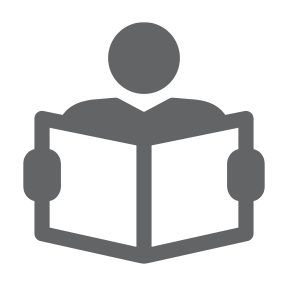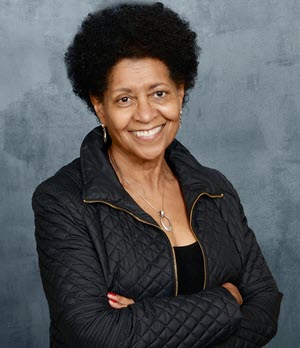By Janet Ohene-Frempong
In a time of turmoil: Back in the summer of 2020, I was invited to give a keynote presentation at the Colorado Health Literacy Coalition’s virtual conference, and was kindly given some leeway regarding what to talk about. We were in the midst of a raging pandemic. Minorities had been dying from COVID-19 in a magnitude that garnered national attention. In March, Breonna Taylor had been ambushed and killed while sleeping in her own house. George Floyd had been publicly executed in May, over the use of a possibly counterfeit 20-dollar bill. Massive protests were taking place all around the globe. And we were facing what many thought was the most important presidential election in our lifetimes. I was in a dangerously emotional state. The organizers of the conference were folks I’ve known for some time and whom I hold in high regard. They gave me an entire hour.
Where do we begin? Here's what I said. I said let’s first take a look at how we define “health literacy.” After all, how can we promote it unless we’re clear about what it is? In 2012, in their article entitled A Review of Health Literacy and Public Health: A Systematic Review and Integration of Definitions and Models, Kristine Sørensen’s team identified 17 overlapping definitions that had been offered by researchers and institutions from 1998 to 2009. Yet, one definition seems to have prevailed, since 2004: “[Health literacy is] the degree to which individuals have the capacity to obtain, process, and understand basic health information and services needed to make appropriate health decisions.” This readily embraced definition appeared in the seminal publication Health Literacy: A Prescription to End Confusion, published by the Institute of Medicine (now known as the National Academies of Sciences, Engineering, and Medicine). That 2004 definition has provided structure and direction for the growing numbers of people who have focused on the issue of health literacy over the past 17 years.
How about focusing on “staying alive, safe, and well”? I’ve been working in the broader field of health communication, with a focus on health literacy and health equity, since the early 1990s. I have found that, unlike the terms “computer literacy” or “financial literacy,” the meaning of the term “health literacy” is not readily apparent to people who are not yet in the field, but who are interested. The in-crowd gets it, but not everyone else does. And, over the years, we’ve devoted significant amounts of attention to the task of sorting out what health literacy is, and what it isn’t.
So, more recently I’ve turned to a simpler way of conveying what health literacy means, at least to me – especially as we endure a surge of deadly social and political turmoil that even calls science, itself, into question. I suggest that health literacy, simply put, is “your ability to figure out what’s needed for you, and for others, to stay alive, safe, and as well as possible.” This seems to resonate with those who are not in the field. It helps them to quickly grasp what we all are ultimately trying to do. And it addresses the situation that people all over the world now find themselves in – the especially daunting task of staying alive and well. So, Zooming in via my laptop that morning in late September, I posed this way of looking at “health literacy” to the invisible group of conference attendees. And now, I pose it to you.
 The current challenges of staying alive, safe, and well: Of course, there are many things that make “staying alive, safe, and as well as possible” in everyday life a bit of a challenge. Consuming too much sugar, salt, and fat can lead to life-threatening conditions. Not wearing a seatbelt lands folks in the hospital with broken bones and brain injuries. Our health, as well as our safety, are at stake. In addition, the lack of quality education, quality housing, a safe environment, a good job with fair pay, adequate transportation, affordable healthcare, and sensible policing (referred to as the social determinants of health) all combine to make it hard for many people to stay alive and as well as possible. And, if you are African American in the United States, there are additional risks. Reaching for your driver’s license during a police traffic stop, among other things, may not be good for your safety and, therefore, for your health. As of 2012, only one of the 17 definitions of health literacy mentioned safety as a concern. Let’s add it in, because so many of us are not safe.
The current challenges of staying alive, safe, and well: Of course, there are many things that make “staying alive, safe, and as well as possible” in everyday life a bit of a challenge. Consuming too much sugar, salt, and fat can lead to life-threatening conditions. Not wearing a seatbelt lands folks in the hospital with broken bones and brain injuries. Our health, as well as our safety, are at stake. In addition, the lack of quality education, quality housing, a safe environment, a good job with fair pay, adequate transportation, affordable healthcare, and sensible policing (referred to as the social determinants of health) all combine to make it hard for many people to stay alive and as well as possible. And, if you are African American in the United States, there are additional risks. Reaching for your driver’s license during a police traffic stop, among other things, may not be good for your safety and, therefore, for your health. As of 2012, only one of the 17 definitions of health literacy mentioned safety as a concern. Let’s add it in, because so many of us are not safe.
The current need for an extra dose of health literacy: But these are all things that make staying alive and well a challenge in everyday life. Then, along comes a new and deadly virus. Now, failure to social distance and wear a face mask can result in life-altering consequences for any one of us. Mixed messaging from elected officials has caused confusion and doubt, along with the death of hundreds of thousands of people. So, surviving in everyday life requires a good degree of health literacy. But I submit that staying alive in the age of COVID-19, along with the attendant social injustice and political turmoil, requires health literacy on steroids.
Expanding the concept of health literacy: Wrapped up in the turbulence of life in 2020, I failed to notice that Chris Zarcadoolas was going to be the other keynote speaker at that Colorado conference. Known as a 1980s “first generation” health literacy scholar, Chris and her colleagues, Andrew Pleasant and David Greer, wrote an article, published in 2005, entitled “Understanding health literacy: An expanded model.” I was amazed! This is precisely the article that I had developed my entire presentation around. In it they suggested that becoming more functionally health literate actually requires some key abilities in four central domains (listed below).
A suggested mission - promoting four central domains of health literacy: This definition has resonated with me since 2005, and I have continued to use it since then. Though they applied it to analyzing public health communication during the 2001 anthrax threat, it seems even more useful in this current public health crisis involving COVID-19. And based on this model, I suggested to the conference attendees that promoting health literacy means taking the following steps. It means:
| Promoting fundamental literacy: We can promote the skills and strategies involved in reading, speaking, writing, and interpreting numbers (numeracy) and adjust our communication accordingly. Many of us in the field have been doing this, in one way or another, for years. |
 |
| Promoting science literacy: We can promote levels of competence with science and technology, including some awareness of the process of science. Too many take for granted the many benefits we enjoy because of what scientists have discovered and applied to make our daily lives more livable. |
 |
| Promoting cultural literacy: We can promote everyone’s ability (even our own) to recognize and use collective beliefs, customs, world-views and social identity to interpret and act on health information. How important is it for us to come to terms with the fact that not everyone views the notion of equity and inclusion in the same way? In fact, we are in the very throes of a culture war. |
 |
| Promoting civic literacy: Last, but definitely not least, we can promote the abilities that enable all of us to become aware of public issues and to become involved in the decision-making process. Where would we be right now, were it not for those who peacefully demonstrated for social justice and voted in record numbers? We need elected officials who will fight to keep us alive and well. |
 |
We can have an impact: Though the political, social, and environmental events of current times may seem almost apocalyptic, our health literacy community has risen to the occasion and has worked hard to have an impact on people’s lives over the past year. When we communicate with people, teach students, or oversee organizations, we can broaden the scope of our mission to include other domains of activity. And this can help us to do even more to keep people alive, safe, and as well as possible.
About the Author
 Janet Ohene-Frempong, President of J O Frempong & Associates, Inc., is a plain language and cross-cultural communications consultant with over 25 years of experience in consumer/provider communications. She has conducted workshops and provided consultation for a wide range of health information, service, and care providers, including: health care systems, government agencies, health insurers, pharmaceutical companies, medical publishers, health and human service agencies and schools of medicine, nursing and allied health. She is often an invited speaker and keynote speaker at national conferences. Janet is an IHA Strategic Partner for Health Literacy, continuing in her mission to promote health literacy as a route to health equity and social justice – a goal that has intensified as cultural, civic, and even scientific issues have become issues of intense national focus and debate.
Janet Ohene-Frempong, President of J O Frempong & Associates, Inc., is a plain language and cross-cultural communications consultant with over 25 years of experience in consumer/provider communications. She has conducted workshops and provided consultation for a wide range of health information, service, and care providers, including: health care systems, government agencies, health insurers, pharmaceutical companies, medical publishers, health and human service agencies and schools of medicine, nursing and allied health. She is often an invited speaker and keynote speaker at national conferences. Janet is an IHA Strategic Partner for Health Literacy, continuing in her mission to promote health literacy as a route to health equity and social justice – a goal that has intensified as cultural, civic, and even scientific issues have become issues of intense national focus and debate.
#IHABlog